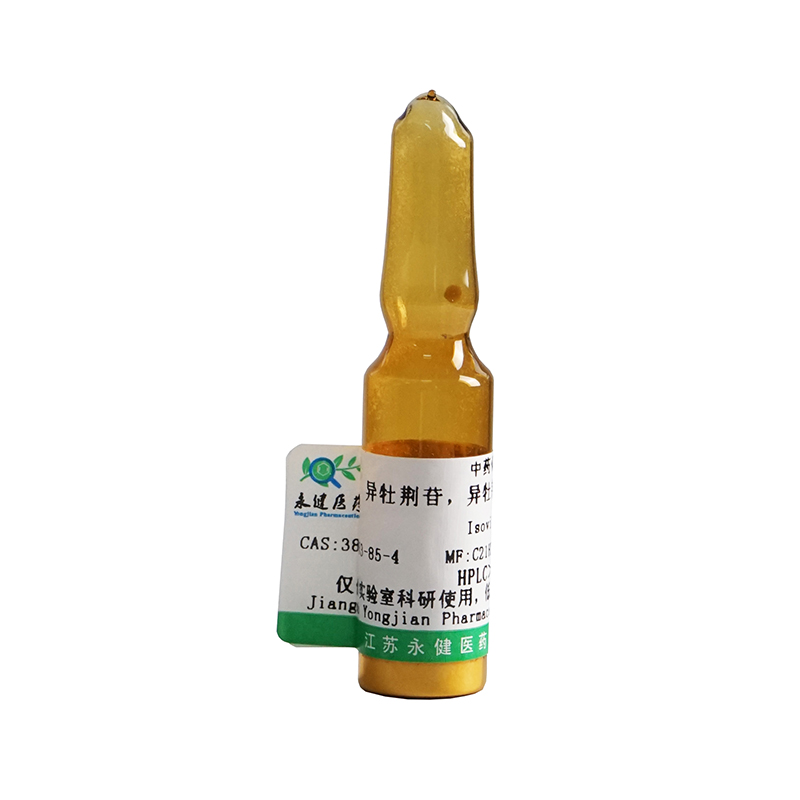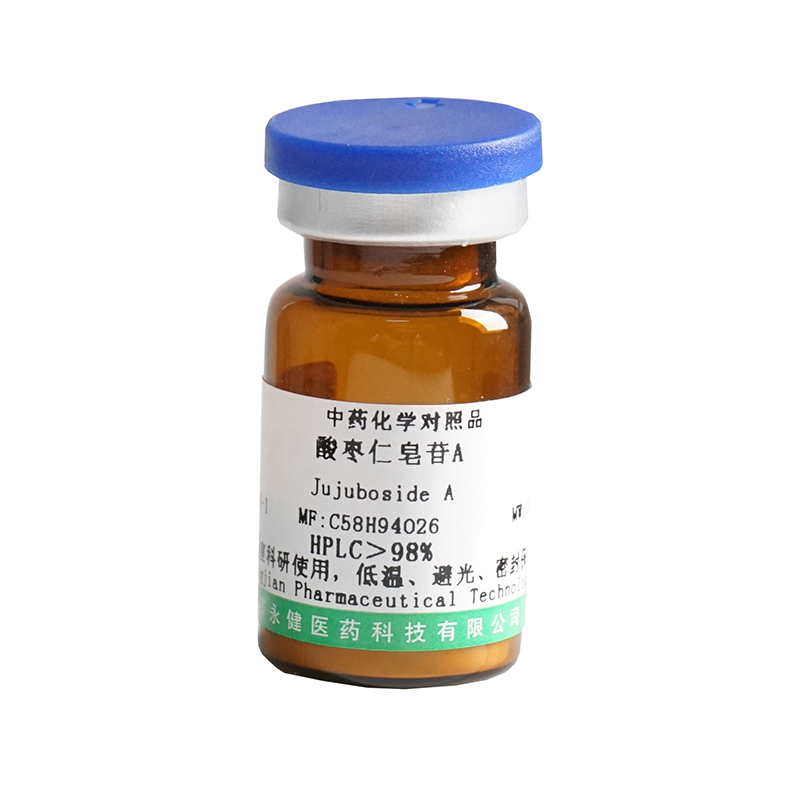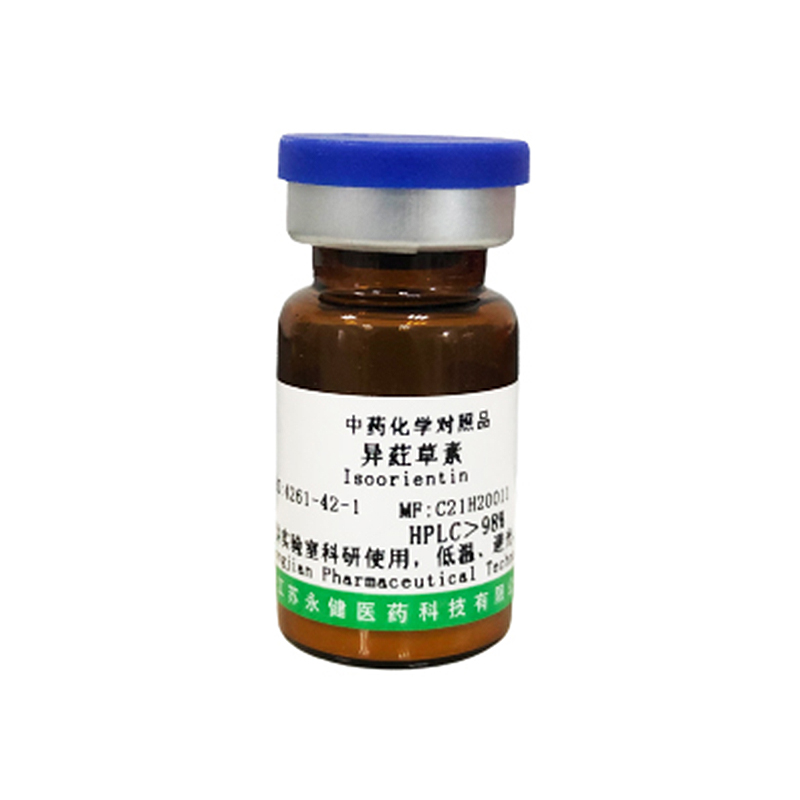Hot Selling for Ginkgolic Acid 17:1 - Isovitexin; Saponaretin; Homovitexin CAS No. 29702-25-8 – Yongjian
Hot Selling for Ginkgolic Acid 17:1 - Isovitexin; Saponaretin; Homovitexin CAS No. 29702-25-8 – Yongjian Detail:
Essential Information
[Chinese name]: isovitexin
[Chinese alias]: isovitexin
[English name]: isovitexin
[English alias]:
6-( β- D-Glucopyranosyl)-5,7-dihydroxy-2-(4-hydroxyphenyl)-4H-1-benzopyran-4-one
[CAS accession No.]: 29702-25-8
[molecular formula]: c21h20o10
[molecular weight]: 432.38
[source]: Ficus microphylla leaves
[properties]: yellow dry powder
[storage method]: – 4 ° C, keep away from light and dry
[precautions]: This product should be kept away from light, dry and low temperature Avoid product degradation caused by moisture and sunlight
[content determination method]: C18 column (150mm) × 4.6mm,5 μ m) The mobile phase was acetonitrile water acetic acid (22:78:1), the flow rate was 1.0ml/min, and the detection wavelength was 270nm.
[pharmacological use]: antitumor compound
[pharmacological properties] melting point: 228 ℃. Optical rotation[ α] D-7.9 ° (pyridine aqueous solution). Insoluble in cold water, slightly soluble in hot water and ethanol.
Biological Activity of Isovitexin
Target: JNK1 jnk2 NF- κ B
In vitro study: isovitexin prevents LPS induced oxidative damage by inhibiting the production of intracellular ROS, and also weakens the effect of H2O2 on cell viability. Contains LPS (2 μ Isovitexin (0-100 g / ml) μ G / ml) had no cytotoxicity to raw 264.7 cells, but 200 μ G / ml isovitexin showed significant cytotoxicity. Isovitexin (25,50) μ G / ml) inhibited LPS induced TNF- α, Increased levels of IL-6, iNOS and COX-2. Isovitexin (25,50) μ G / ml) also inhibited I in raw 264.7 cells κ B α Phosphorylation and degradation, which is consistent with the effect of JNK1 / 2 inhibitor [1].
In vivo studies: isovitexin (50 and 100 mg / kg, IP) caused less severe histopathological changes in lung sections and reduced the number of inflammatory cells in LPS induced mice. Heteroeosinophils (50 and 100 mg / kg, IP) decreased TNF by- α And IL-6 production, ROS production, MPO and MDA content, increased SOD and GSH, and prevented LPS induced inflammation and oxidative stress in LPS induced Ali mice. And effectively inhibit the protein expression of iNOS and COX-2 [1]. Isovitexin (25,50, 100 mg / kg) decreased the survival rate of LPS / D-gal induced liver injury in mice in a dose-dependent manner. Isovitexin also inhibited NF- κ B and up regulate LPS / D-gal induced Nrf2 and HO-1 in mice [2].
Cell experiment: cell viability was determined by MTT assay. Raw 264.7 cells were inoculated on 96 well plates (1) × 104 cells / well) and with various concentrations of isovitexin (final concentration: 0-200) μ G / ml) and LPS (2 μ G / ml) for 24 hours. In addition, use IV (25 or 50 μ G / ml) pretreated the cells for 1 hour, and then H 2O 2 (300) was added μ M)。 After 24 hours, MTT (5 mg / ml) was added to the cells and then incubated for 4 hours [1].
Animal experiment: mice [1] in order to establish Ali model, mice were randomly divided into 6 groups: control (saline), only isovitexin (100 mg / kg, dissolved in 0.5% DMSO), only LPS (0.5 mg / kg, dissolved in saline), LPS (0.5 mg / kg) + isovitexin (50 or 100 mg / kg) and LPS (0.5 mg / kg) + dexamethasone (DEX, 5 mg / kg, dissolved in saline). Isovitexin or DEX (5 mg / kg) isovitexin was administered. After exposure to isovitexin or DEX for 1 hour, mice were anesthetized with ether and LPS was administered intranasally (in) to induce lung injury. The animals were euthanized 12 hours after LPS administration. Therefore, bronchoalveolar lavage fluid (BALF) and lung tissue samples were harvested to measure cytokine levels; ROS generation; SOD, GSH, MDA and MPO activities; And the expression of COX-2, iNOS, HO-1 and Nrf2 proteins [1].
Product detail pictures:


Related Product Guide:
The key to our success is "Good Product or service High quality, Reasonable Rate and Efficient Service" for Hot Selling for Ginkgolic Acid 17:1 - Isovitexin; Saponaretin; Homovitexin CAS No. 29702-25-8 – Yongjian , The product will supply to all over the world, such as: Ecuador, Cyprus, Macedonia, We have top engineers in these industries and an efficient team in the research. What is more, we have our own archives mouths and markets in China at low cost. Therefore, we can meet different inquiries from different clients. Please find our website to check more information from our products.
The factory technical staff gave us a lot of good advice in the cooperation process, this is very good, we are very grateful.







